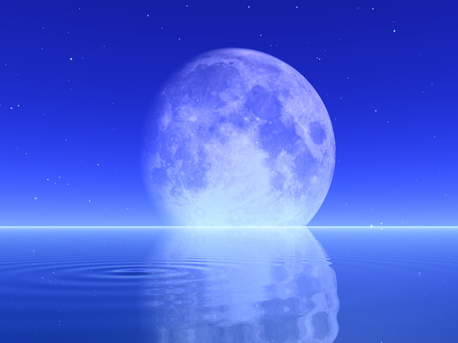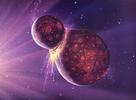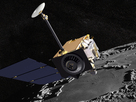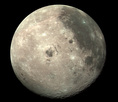New Finding - Water Deposits on the Moon
NASA Instruments Reveal Water on Lunar Surface
NASA scientists have discovered water molecules in the polar regions of the moon. Instruments aboard three separate spacecraft revealed water molecules in amounts that are greater than predicted, but still relatively small. Hydroxyl, a molecule consisting of one oxygen atom and one hydrogen atom, also was found in the lunar soil. The findings were published in Thursday's edition of the journal Science.
 © www.gratis-foto.eu
|
The new finding of water on the moon, reported by NASA today, could ease the exploration and the construction and maintenance of a future lunar basis.
Article Content
- » 1 - Holy grail for lunar scientists
- » 2 - 32 ounces of water out of one ton of lunar soil
Holy grail for lunar scientists
NASA's Moon Mineralogy Mapper, or M3, instrument reported the observations. M3 was carried into space on Oct. 22, 2008, aboard the Indian Space Research Organization's Chandrayaan-1 spacecraft. Data from the Visual and Infrared Mapping Spectrometer, or VIMS, on NASA's Cassini spacecraft, and the High-Resolution Infrared Imaging Spectrometer on NASA's Epoxi spacecraft contributed to confirmation of the finding. The spacecraft imaging spectrometers made it possible to map lunar water more effectively than ever before.
The confirmation of elevated water molecules and hydroxyl at these concentrations in the moon's polar regions raises new questions about its origin and effect on the mineralogy of the moon. Answers to these questions will be studied and debated for years to come.
"Water ice on the moon has been something of a holy grail for lunar scientists for a very long time," said Jim Green, director of the Planetary Science Division at NASA Headquarters in Washington. "This surprising finding has come about through the ingenuity, perseverance and international cooperation between NASA and the India Space Research Organization."
The confirmation of elevated water molecules and hydroxyl at these concentrations in the moon's polar regions raises new questions about its origin and effect on the mineralogy of the moon. Answers to these questions will be studied and debated for years to come.
"Water ice on the moon has been something of a holy grail for lunar scientists for a very long time," said Jim Green, director of the Planetary Science Division at NASA Headquarters in Washington. "This surprising finding has come about through the ingenuity, perseverance and international cooperation between NASA and the India Space Research Organization."
New Finding - Water Deposits on the Moon
NASA Instruments Reveal Water on Lunar Surface
NASA scientists have discovered water molecules in the polar regions of the moon. Instruments aboard three separate spacecraft revealed water molecules in amounts that are greater than predicted, but still relatively small. Hydroxyl, a molecule consisting of one oxygen atom and one hydrogen atom, also was found in the lunar soil. The findings were published in Thursday's edition of the journal Science.
 © www.gratis-foto.eu
|
The new finding of water on the moon, reported by NASA today, could ease the exploration and the construction and maintenance of a future lunar basis.
Article Content
- » 1 - Holy grail for lunar scientists
- » 2 - 32 ounces of water out of one ton of lunar soil
Holy grail for lunar scientists
NASA's Moon Mineralogy Mapper, or M3, instrument reported the observations. M3 was carried into space on Oct. 22, 2008, aboard the Indian Space Research Organization's Chandrayaan-1 spacecraft. Data from the Visual and Infrared Mapping Spectrometer, or VIMS, on NASA's Cassini spacecraft, and the High-Resolution Infrared Imaging Spectrometer on NASA's Epoxi spacecraft contributed to confirmation of the finding. The spacecraft imaging spectrometers made it possible to map lunar water more effectively than ever before.
The confirmation of elevated water molecules and hydroxyl at these concentrations in the moon's polar regions raises new questions about its origin and effect on the mineralogy of the moon. Answers to these questions will be studied and debated for years to come.
"Water ice on the moon has been something of a holy grail for lunar scientists for a very long time," said Jim Green, director of the Planetary Science Division at NASA Headquarters in Washington. "This surprising finding has come about through the ingenuity, perseverance and international cooperation between NASA and the India Space Research Organization."
The confirmation of elevated water molecules and hydroxyl at these concentrations in the moon's polar regions raises new questions about its origin and effect on the mineralogy of the moon. Answers to these questions will be studied and debated for years to come.
"Water ice on the moon has been something of a holy grail for lunar scientists for a very long time," said Jim Green, director of the Planetary Science Division at NASA Headquarters in Washington. "This surprising finding has come about through the ingenuity, perseverance and international cooperation between NASA and the India Space Research Organization."











